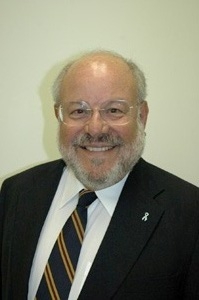The worst U.S. accident involving a space device with nuclear materials was the fall from orbit in 1964 of a satellite powered by 2.1 pounds of plutonium. The fiery re-entry resulted in a wide dusting of fine particles of plutonium from its SNAP 9-A nuclear system over the Earth, according to subsequent research. Dr. John Gofman, professor of medical physics at the University of California at Berkeley, long linked this accident to an increase in global lung cancer. A millionth of a gram of plutonium is a fatal dose.
This mishap was cited in the Final Environmental Impact Statement that NASA prepared for the Curiosity mission as being among the three accidents which have occurred among the 26 U.S. space missions that have used plutonium. In the wake of the SNAP 9-A accident, NASA switched to solar energy on satellites. Now all satellites and the International Space Station are solar powered.
Still, there has continued to be a push through the years for using nuclear power in space with that drive accelerating in recent times. Major U.S. space nuclear power work is now underway at NASA's Marshall Space Flight Center in Alabama.
"NASA's Marshall Space Flight Center here is expanding the scope of its nuclear technology work," wrote Frank Morring, Jr. in Aviation Week on November 15. Marshall has been working "with the Department of Energy on nuclear power technology that might one day power a lunar outpost," said the article. "That work continues, but it has expanded to encompass another technology goal under the new Obama policy: advanced in-space propulsion."
The Obama administration is also seeking construction of a facility at Idaho National Laboratory to produce the isotope of plutonium that is used in space nuclear systems, Plutonium-238. It is an "ill-conceived plan" that risks the public's safety, says James Powell, executive director of Keep Yellowstone Nuclear Free. The organization has been fighting the opening of the facility.
Because Florida is where the Kennedy Space Center is located, is on the front line for launches in the U.S. space nuclear program. Pax Christi of Tampa Bay and other Florida groups were active in protesting the Curiosity launch. They took to the streets with signs declaring: "No Nukes In Space" and "Danger: Launching of NASA Mars Probe With 10 Lbs. Plutonium. Don't Do Disney." That referred to Disney theme parks in Orlando.
NASA's Final Environmental Impact Statement for the Curiosity mission said a launch accident releasing plutonium had a 1-in-420 chance of happening and could "release material into the regional area defined"to be within"62 miles of the launch pad," That would take in Orlando.
"Overall" on the Curiosity mission, NASA said the odds were 1-in-220 of plutonium being released. This included in a fall back to Earth, as the Phobos-Grunt space probe suffered.
John Stewart of Pax Christi of Tampa Bay maintained before the Curiosity launch: "NASA is planning a mission that could endanger not only its future but the state of Florida and beyond. The absurd--and maddening--aspect of this risk is that it is unnecessary. The locomotion for NASA's Sojourner Mars rover, launched in 1996, and the Spirit and Opportunity Mars rovers, both launched in 2003, was solar powered, with the latter two rovers performing well beyond what their engineers expected. Curiosity's locomotion could also be solar-powered. NASA admits this in its EIS, but decided to put us all at risk because plutonium-powered batteries last longer and they want to have the "flexibility to select the most scientifically interesting location on the surface' of Mars."
Beyond the potential price in lives, space nuclear power has a high cost financially. The potential clean-up costs for dispersal of the 10.6 pounds of plutonium on Curiosity would be, said the Final Environmental Impact Statement for the mission, $267 million for each square mile of farmland contaminated, $478 million for each square mile of forests and $1.5 billion for each square mile of "mixed-use urban areas." The Curiosity mission itself costs $2.5 billion.
Bruce Gagnon, coordinator of the Global Network Against Weapons & Nuclear Power in Space, contends: "The taxpayers are being asked once again to pay for nuclear missions that could endanger the lives of all the people on the planet. Have we not learned anything from Chernobyl and Fukushima? We don't need to be launching nukes into space. It's not a gamble we can afford to take."
-30-
Karl Grossman, professor of journalism at the State University of New York/College at Old Westbury, is the author of The Wrong Stuff: The Space Program's Nuclear Threat to Our Planet, and writer and presenter of the TV program Nukes in Space: The Nuclearization and Weaponization of the Heavens (http://www.envirovideo.com).
(Note: You can view every article as one long page if you sign up as an Advocate Member, or higher).





